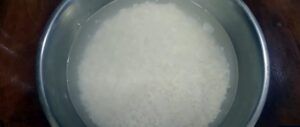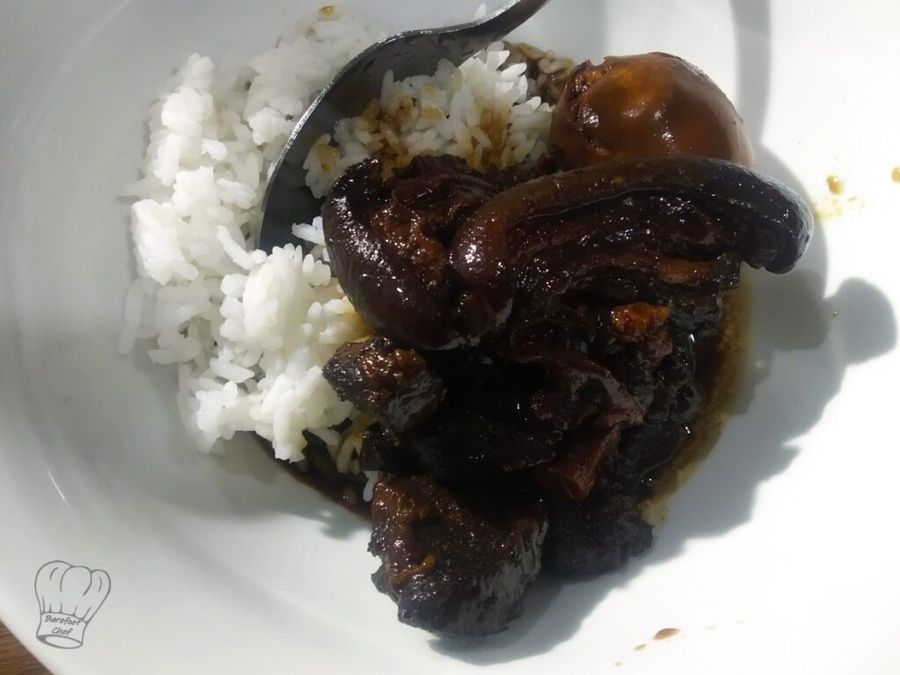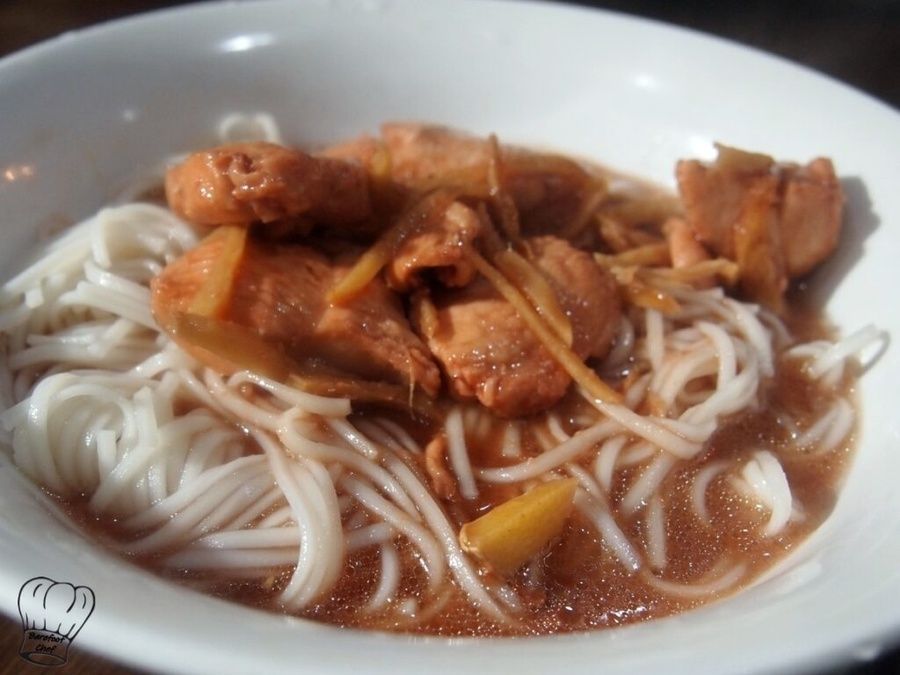

Barefoot Chef
Red Yeast Rice Wine (Fuzhou Hong Zhao)
Red rice wine, also known as hong zao jiu or ang zao jiu, is a type of rice wine that is popular in China and other parts of Asia. It is made by fermenting rice with red yeast rice, which gives the wine its distinctive red color. The rice is fermented with a type of yeast that has been cultured with Monascus purpureus.
History
Rice wine has a long history in China. It is believed to have been first produced in China around the 2nd century BC. The production of rice wine involves the fermentation of rice, water, and yeast, and it has traditionally been an important beverage in Chinese culture, used for both drinking and in religious ceremonies. Rice wine was also an important trade item in ancient China and was often given as a gift to foreign dignitaries. Over time, the production of rice wine spread to other parts of Asia, and it is now enjoyed in many countries around the world. In China, rice wine is typically served in small cups and is considered a symbol of hospitality and good luck.
Isn't alcohol bad for you?
In traditional Chinese medicine, red rice wine is believed to have a number of health benefits. It is believed to help aid in digestion, promote circulation, and have an overall tonifying effect on the body. While some of these claims have yet to be scientifically proven, many people continue to consume red rice wine for its potential health benefits.
What yeast do I use?
The yeast used in rice wine production is different from the yeast used in bread and wine production. With rice wine fermentation is carried out by a combination of the fungus Aspergillus oryzae, which converts the rice starches into fermentable sugars, and yeast which in turns converts the sugars into alcohol. The fermentation process typically takes several weeks and can result in an alcohol content of between 18 and 25 percent. You need to buy rice leaven or rice balls when making rice wine at home.
How to make a great rice wine?
When making rice wine at home, it's important to choose the right type of rice. Look for a short-grain or glutinous rice, as these types have a high starch content that is ideal for fermentation. Before starting the fermentation process, be sure to wash the rice thoroughly and then soak it in water for several hours or overnight to soften it and make it easier to process. When mixing the cooked rice allow it to cool and mix well with the yeast (so the yeast touches almost every grain of rice.
Ingredients
1 kg (35 oz) glutinous rice
5 g (0.2 oz) rice wine leaven
1.2 kg (5 cups) cooled boiled water
200 g (7 oz) red yeast rice
Method
Sanitize the jar, sieve, jug & bottles etc in a 5 gallon bucket with one teaspoon of household bleach for at least 30 minutes and then rinse with filtered water and allowed to dry thoroughly without touching
Wash the rice until the water runs clear. Cover the rice with at least one inch of water and soak overnight. Take note of the initial weight of the rice.

After soaking weigh the rice and add total water to equal 1.2 times the weight of the rice. For example if after soaking my rice weighed 1400g i needed to add 800g water. Steam the rice and let it cool to below 38 degrees centigrade.

When the rice is cool sprinkle in the yeast and the red rice, try to combine it with as many grains of rice as possible. Add a little water if needed to stir the rice. Place the rice into the fermenting vessel leaving at least 1/3rd of the container empty. Cover with a cloth or loosely tighten the lid leaving enough space for air to escape but not enough space for insects to enter. Allow to ferment for 60 days.Strain the rice out and bottle the liquid. Leave the caps on the bottles loose as the fermentation will continue and carbon dioxide will be produced. The wine can be racked after a week or so to remove more sediment if you choose or drunk straight away.

Strain the rice out and bottle the liquid. Leave the caps on the bottles loose as the fermentation will continue and carbon dioxide will be produced. The wine can be racked after a week or so to remove more sediment if you choose or drunk straight away.

Barefoot Chef
This is the barefoot chef
Related Posts

Mar 27, 2023
Malaysian Curry
Apr 19, 2023
Thunder Tea Rice - Hakka Lei Cha
May 18, 2023
Roast Duck - In a halogen oven
